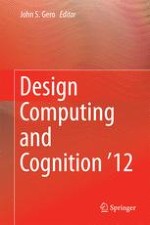2014 | OriginalPaper | Buchkapitel
Beyond Function−Behavior−Structure
verfasst von : Mahmoud Dinar, Chris Maclellan, Andreea Danielescu, Jami Shah, Pat Langley
Erschienen in: Design Computing and Cognition '12
Verlag: Springer Netherlands
Aktivieren Sie unsere intelligente Suche, um passende Fachinhalte oder Patente zu finden.
Wählen Sie Textabschnitte aus um mit Künstlicher Intelligenz passenden Patente zu finden. powered by
Markieren Sie Textabschnitte, um KI-gestützt weitere passende Inhalte zu finden. powered by
